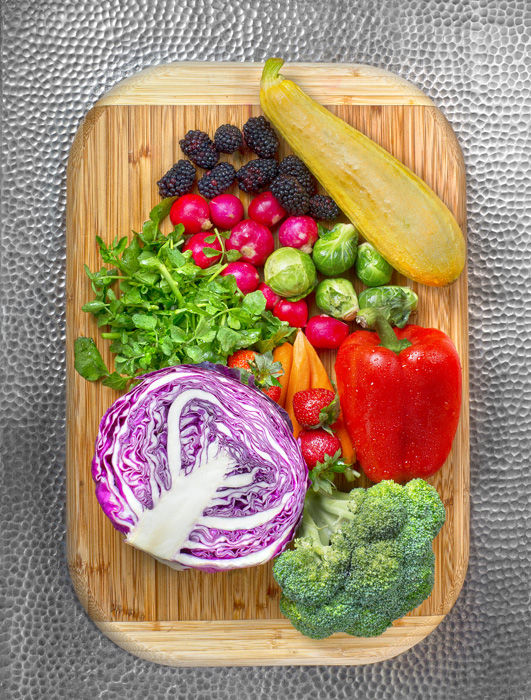Popeye might have been on to something with his power-up gulps of spinach. For the most part, though, the veggies and fruits that pack the most nutritional roundhouse punch are not the ones Americans are most likely to gobble down.
In a study published by the Centers for Disease Control and Prevention, watercress tops the list of “powerhouse” produce, followed by Chinese cabbage, chard, beet greens, spinach and a variety of other green and leafy superstars. The study offers a scorecard of 41 fruits and vegetables most strongly associated with reducing chronic disease.
Potatoes didn’t make the cut, nor corn, onions or peas – all favorites on the American plate. And while no one questions the health benefits of fruit, only a few made the list, which features foods rich in a variety of essential nutrients. Among fruits, red pepper – yes, a fruit – was tops. Next were pumpkin, tomato and lemon.
Of the six foods that the researchers considered and decided to leave off the list, four were fruits: raspberries, tangerines, cranberries and blueberries. The other two were garlic and onions.
The study, from William Paterson University in New Jersey, assigned scores based on a food’s “nutrient density,” with watercress scoring 100 and the last on the powerhouse list, white grapefruit, earning 10.47.
It’s far from the last word on healthy eating, which researchers acknowledge. “The scores do not reflect all of the constituents that may confer health benefits,” it says.
In scoring fruits and veggies on 17 major nutrients, it doesn’t rank foods that have disease-fighting properties besides key nutrients. So some foods strongly associated with good health, such as garlic, cranberries, bananas and apples, fell short of the powerhouse criteria.
Researchers said their aim was to help consumers look beyond mere food categories – like green leafy, yellow-orange, citrus – to see which specific foods within those categories are the real stars.
Eating vegetables is still a hard sell for many Americans. In a 2013 CDC survey, nearly 38 percent of adults said they consumed veggies less than once a day.
Colleen Sanders-Symanski, local diabetes educator, a registered nurse and a lifestyle health coach, says part of the problem is that people tend to be creatures of habits. “We don’t look at foods in a way that tells us how they nourish us,” she said. “We tend to look at foods in terms of what’s the latest fad, what’s popular. We eat mindlessly instead of mindfully.”
As for so-called “plant-strong” foods, which she says should make up the majority of a person’s plate, “Most people haven’t even heard of watercress or arugula, and these are in the grocery store. People don’t think of these when putting together their salads. They think of those greens as something they’ll find in a salad if they’re in an expensive restaurant.”
People need to change their routines – to think beyond the latest fad and instead about how to nourish their bodies, she said.
And eating the same thing over and over — even if they are healthy choices – isn’t the healthiest approach. “You miss out on other foods that are possibly nourishing in different ways and even more nourishing,” she said.
Another possible obstacle is that some people are intimidated by such things as watercress and arugula. “They are not sure what to do with it or they’ve tasted it once and they didn’t care for the way it was prepared,” she furthered.
For example, with okra, most people think of it as having a slimy texture, she said. But you can dice it up and roast it to give it a different taste and texture. As for kale and chard, she says, “they don’t have the foggiest idea of what to do with it.”
Sanders-Symanski suggests people fry these vegetables, bake them or add them to soups and cook on low heat.
As for watercress, it can be used as a salad green with Romaine lettuce or fresh spinach, steamed and eaten as a vegetable, and in soups for a subtle, peppery flavor. It’s also a standard ingredient for sandwiches in Britain.
The bottom line is always the same. Eat a variety of good foods. Then you don’t have to worry about any scorecard.
For the full CDC scorecard of power foods, see http://www.cdc.gov/pcd/issues/2014/13_0390.htm

